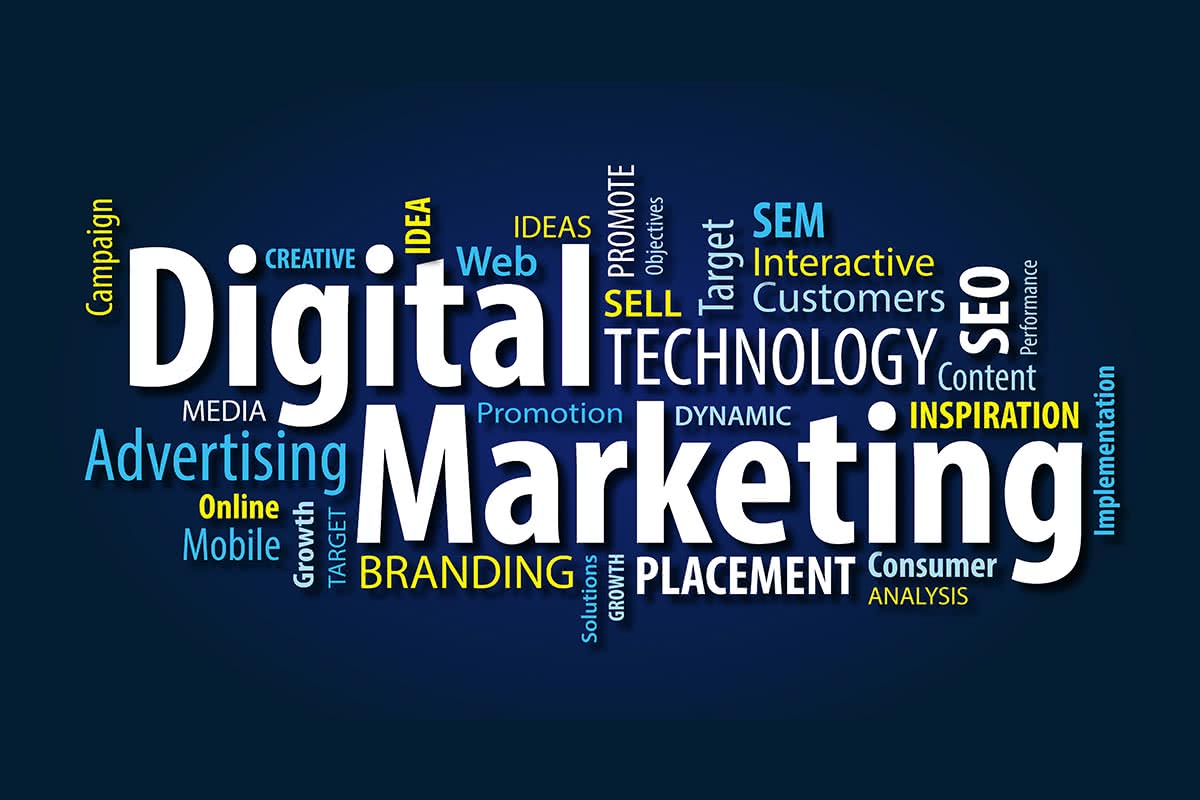Cost-Effective Methods to Digital Marketing Lockhart for Growing Business
Cost-Effective Methods to Digital Marketing Lockhart for Growing Business
Blog Article
Transform Your Business With Data-Driven Digital Advertising
In today's rapidly advancing marketplace, leveraging data-driven digital advertising has come to be necessary for organizations aiming to improve their competitive side. By using analytics to obtain understandings into customer behavior, companies can customize their advertising techniques for optimal impact. This technique not only fosters deeper interaction yet likewise boosts brand name loyalty through customized experiences. As we discover the complexities of carrying out effective data-driven methods, it is vital to think about just how these methods can essentially improve your marketing efforts and affect your bottom line. What crucial elements should you focus on to make certain success?
Recognizing Data-Driven Marketing
Data-driven advertising is significantly recognized as a vital technique for services aiming to enhance their marketing efficiency. This methodology counts on the systematic collection, evaluation, and utilization of data to inform advertising approaches and choices. By leveraging different information resources, consisting of customer demographics, actions patterns, and market trends, companies can create targeted campaigns that resonate with certain target markets.
At its core, data-driven advertising entails integrating analytics right into the marketing process. This enables real-time understandings right into campaign performance, allowing marketing experts to make educated changes and maximize their methods. By understanding client preferences and involvement levels, organizations can craft tailored messaging that is more probable to transform potential clients into devoted clients.
Furthermore, data-driven marketing cultivates a society of liability within organizations. Marketing experts can track their return on investment (ROI) and evaluate the performance of various channels, such as social media sites, email, and search engines. This analytical strategy not only boosts decision-making however additionally urges continuous enhancement in marketing techniques as organizations refine their methods based on empirical proof. As businesses accept data-driven advertising, they position themselves to respond properly to transforming market characteristics and customer expectations.
Benefits of Information Analytics

Among the main benefits is the capacity for individualized advertising and marketing. Data analytics enables businesses to segment their target market properly, tailoring messages and provides that resonate with particular teams. This degree of personalization not just enhances involvement rates however additionally fosters brand commitment.
Furthermore, data analytics assists in real-time decision-making. Marketing experts can keep an eye on project efficiency continually, changing techniques based on instant responses and results. This agility causes maximized source appropriation and improved return on financial investment.
Furthermore, predictive analytics empowers businesses to prepare for future trends and customer requirements, enabling aggressive methods as opposed to reactive actions. This insight can be a considerable affordable benefit in today's vibrant market landscape.
Key Devices and Technologies

Among the crucial modern technologies is Customer Partnership Administration (CRM) software program, which allows organizations to take care of customer communications and analyze information throughout the client lifecycle. In addition, advertising automation platforms streamline repetitive jobs, promoting personalized interaction and lead nurturing.

Data visualization devices, such as Tableau and Google Information Workshop, help experts translate complicated data sets, offering understandings in a conveniently digestible layout. Furthermore, analytics systems like Google Analytics give important metrics on website traffic and individual look what i found actions, making it possible for marketing professionals to enhance their approaches.
Social media site analytics devices, such as Hootsuite and Sprout Social, use insights into audience involvement and web content performance across various platforms. Last but not least, A/B screening tools, like Optimizely, permit online marketers to explore various approaches, making certain that data-driven decisions are continuously fine-tuned. By leveraging these modern technologies, services can cultivate a data-centric society, resulting in a lot more efficient digital advertising projects.
Implementing Reliable Approaches
To effectively implement efficient methods in electronic advertising and marketing, companies must initially align their goals with actionable insights stemmed from data analytics. This positioning allows organizations to customize their advertising efforts, guaranteeing they reverberate with target audiences. By leveraging information from different networks, such as social networks, e-mail marketing, and web site analytics, business can recognize patterns, choices, and habits that notify their method.
Following, it is essential to focus on customer segmentation. By categorizing their audience based on demographics, rate of interests, and buying habits, organizations can create personalized advertising and marketing projects that drive involvement and conversion. Automation tools can promote this procedure, allowing online marketers to supply prompt, pertinent material to specific segments.
Furthermore, accepting a dexterous marketing technique can improve responsiveness to market modifications and consumer comments. Regularly assessing project efficiency and making data-driven changes can enhance end results and resource allocation.
Lastly, fostering a culture of collaboration between advertising, sales, and data analytics groups is crucial. This multidisciplinary technique makes certain that insights are successfully shared and integrated into broader service approaches, inevitably driving continual development in an affordable landscape.
Determining Success and ROI
Just how these details can organizations properly important site measure success and roi (ROI) in electronic advertising? The solution lies in establishing clear goals and utilizing the best metrics. Begin by specifying essential efficiency indicators (KPIs) that line up with company goals, such as conversion prices, client procurement costs, and engagement metrics. These KPIs provide a measurable basis for assessing the effectiveness of electronic marketing campaigns.
Making use of analytics devices is important in this procedure. Systems such as Google Analytics and social networks understandings allow organizations to track individual behavior and campaign efficiency in real time. By assessing data, businesses can recognize which approaches yield the very best outcomes and assign resources accordingly.
Furthermore, employing ROI estimations can provide a more clear image of financial performance (Digital Marketing Lockhart). This includes determining the earnings created from digital advertising efforts against the overall expenses sustained. A simple formula is (Web Profit/ Expense of Investment) x 100 to identify the ROI percentage
Ultimately, a comprehensive approach that integrates qualitative and quantitative analysis will certainly make it possible for companies to assess their digital advertising and marketing success precisely and make educated choices for future campaigns. This data-driven state of mind is essential for continuous renovation and sustainable development.
Conclusion
In final thought, the assimilation of data-driven electronic marketing represents a transformative approach for services seeking to boost involvement and foster brand loyalty. The use of key tools and innovations better promotes this process, making certain that advertising initiatives are lined up with customer behavior and assumptions.
In today's quickly advancing market, leveraging data-driven digital advertising has ended up being vital for businesses intending to improve their affordable edge (Digital Marketing Lockhart).Data-driven advertising is increasingly acknowledged as a vital method for services intending to improve their marketing performance.At its core, data-driven advertising and marketing entails incorporating analytics into the advertising process. As businesses welcome data-driven advertising, they position themselves to respond successfully to altering market characteristics and customer expectations
In final thought, the integration of data-driven electronic marketing represents a transformative technique for businesses seeking to improve engagement and foster brand name loyalty.
Report this page